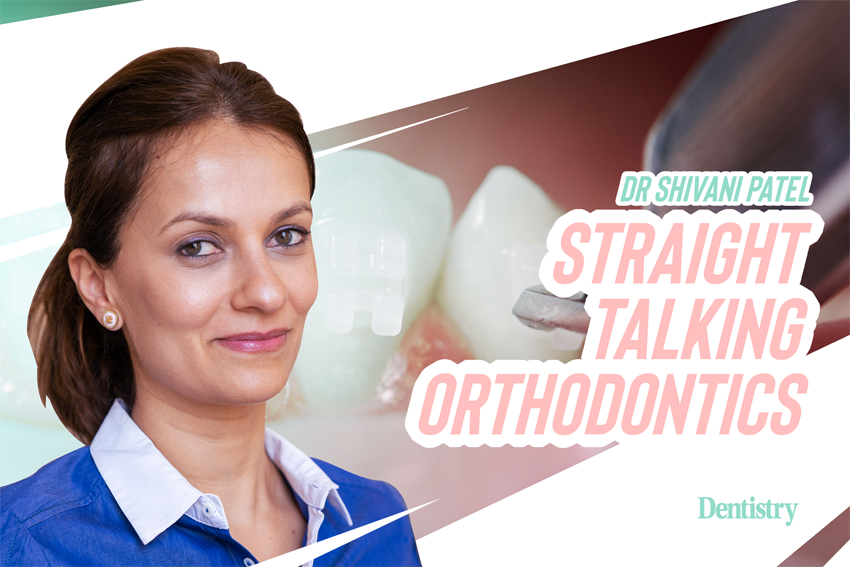
From intraoral scanners to 3D printers, this month Shivani Patel discusses the benefits of updating the technology in your practice.
As in many other fields, technology is opening up new possibilities within dentistry and orthodontics, improving efficiency, accuracy and aftercare.
Practices that are striving to move forwards with growth will all be investing in technology to allow for that high quality end-to-end patient care.
Intraoral scanners
Intraoral scanners (IOS) are devices for capturing direct optical impressions in dentistry.
An intraoral scanner is a handheld device used to directly create a digital impression of the mouth.
The light source from the scanner is projected onto the scan objects, such as full dental arches. Then the 3D model processed by the scanning software will be displayed in real-time on a touch screen.
This means that any dental care required that involves communicating with a lab (crowns, bridges and aligners such as Invisalign), can be completed digitally. Usually without any in-the-mouth impressions!
There are a wide number of these on the market, such as Trios, Sirona (Cerec), Itero, Carestream, Planmeca etc.
Some are specific to restorative specialities and others are better for orthodontic needs.
Enhancing patient care
A state-of-the-art scanner is completely safe, does not emit any radiation, is pain free, and allows you to see the 3D image for your teeth and gums instantly.
The Itero scanner is one of the most popular amongst orthodontists and can be used for aligner treatment and other removable appliances like URA and retainers.
The labs can now also make fixed appliances such as TPA, RME, and bonded retainers from scans.
Whether you’re making the leap to a digital workflow or looking to upgrade, the Itero Element 5D imaging system is a great investment to help you provide the best possible care to your patients.
Built for ease of use, it’s the first hybrid dental imaging system that simultaneously records 3D, intraoral colour and NIRI images. This eliminates the need for multiple devices and repetitive sterilisation.
The Itero Element 5D includes:
- The first 3D intraoral scanner with near-infrared imaging (NIRI) technology to aid your diagnostic workflow. Aids in detection and monitoring of interproximal caries above the gingiva in real time
- Invisalign Outcome Simulator keeps patients engaged and treatments on track
- The Timelapse technology will keep your patients engaged by helping them to visualise diagnostic, restorative, or orthodontic comparisons. This way you can track their progress and see if they are compliant with treatment or that the teeth are moving as prescribed
- Work efficiently with your lab-send restorative STL files directly to your lab or export them from your Itero cloud account.
3D facial scanners
Facially-driven dentistry is what we all must be carrying out.
The teeth should fit the face – not the other way around.
These highly accurate 3D models of the patients’ faces allows the face and teeth scans to be automatically combined. As a result, your patients can see how the simulated procedure result will look.
In addition, if patients can visualise treatment outcomes, this can enhance your conversion rate.
3D printers
These printers are common for the purpose of stereolithography, digital light processing and material jetting.
Each technology can deliver the superior precision and accuracy needed for these applications.
3D radiographic imaging
3D radiographic imaging is now commonly used in the form of CBCT, MRI and ultrasounds.
Any 3D imaging should only be ordered when there is clear, specific, individual clinical justification.
CBCT has been justified for the use of identifying :
- Impacted and supernumerary teeth, such as unerupted canines
- Diagnosis of root resorption
- Evaluation of root fractures
- Prior to removal of third molars
- Imaging of complex craniofacial anomalies
- Imaging airways for the diagnosis of OSA.
In addition, MRI scan are now commonly used by restorative dentists to diagnose temporomandibular disorders. This is especially important prior to complex restorative care and any occlusal therapy.
It has been suggested that it will soon be acceptable to take low dose CBCT scans instead of OPG X-rays. Therefore, the roots and support structures can be visualised and incorporated into the aligner treatment planning by Invisalign.
CBCT is already being used regularly by the dental profession in parts of the world as routine radiography prior to dental and orthodontic care.
Remote monitoring of treatment progress
Patients can use a proprietary Scanbox device plus their smartphone to take intraoral images (at the frequency you set) from anywhere. Then, they send them to you on the patient app.
As a result, this drives compliance, optimises chairside time and boosts engagement.
Considering all of the technological advancements I have listed, the benefits of updating the technology in your practice is clear.
Not only does it streamline your workflow, but it also strengthens patient outcomes.
Catch up on previous Straight Talking Orthodontics columns:
- Don’t neglect the lips and tongue!
- What GDPs should watch out for in children
- An introduction to static occlusal goals.
Follow Dentistry.co.uk on Instagram to keep up with all the latest dental news and trends.


